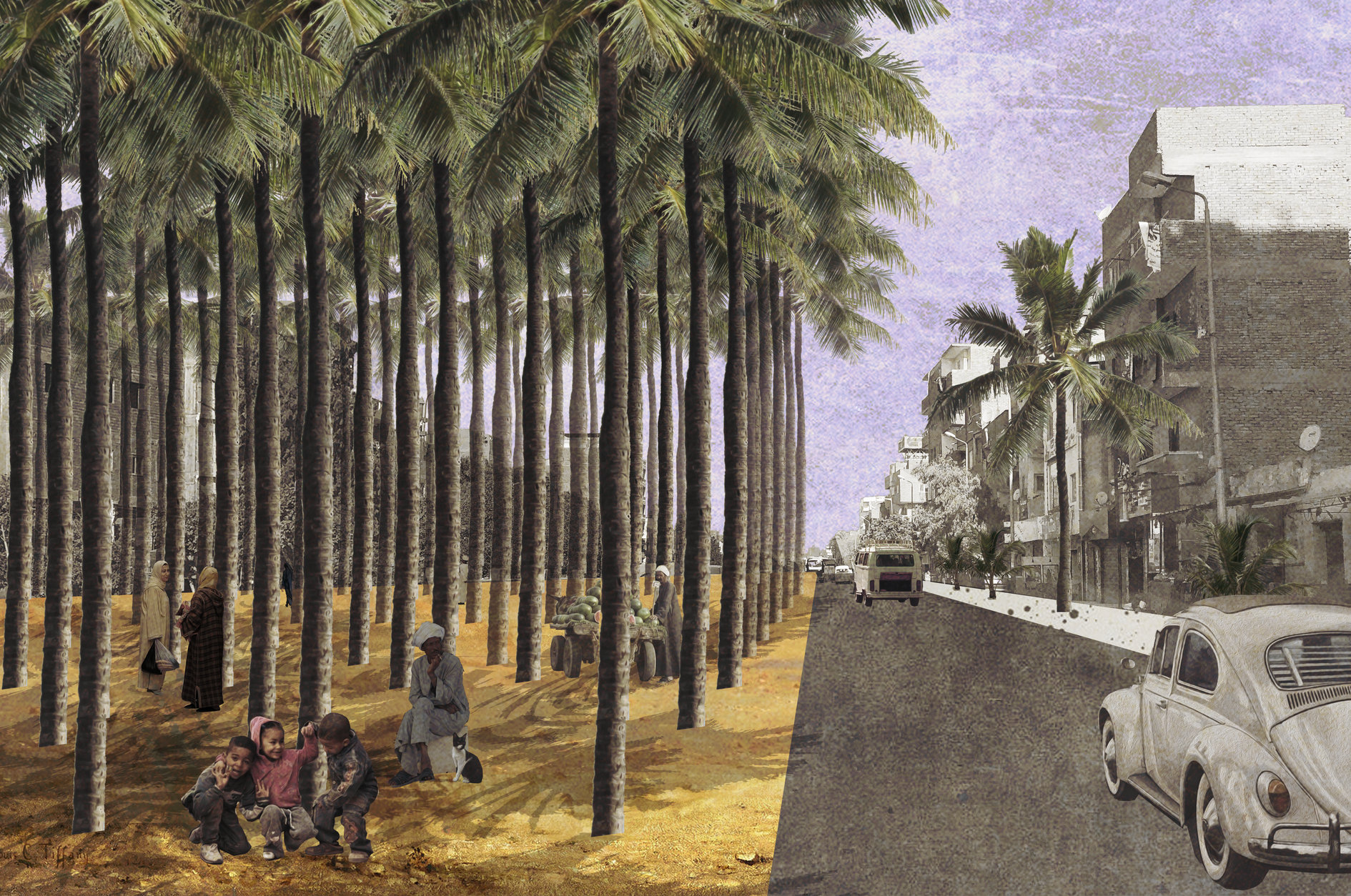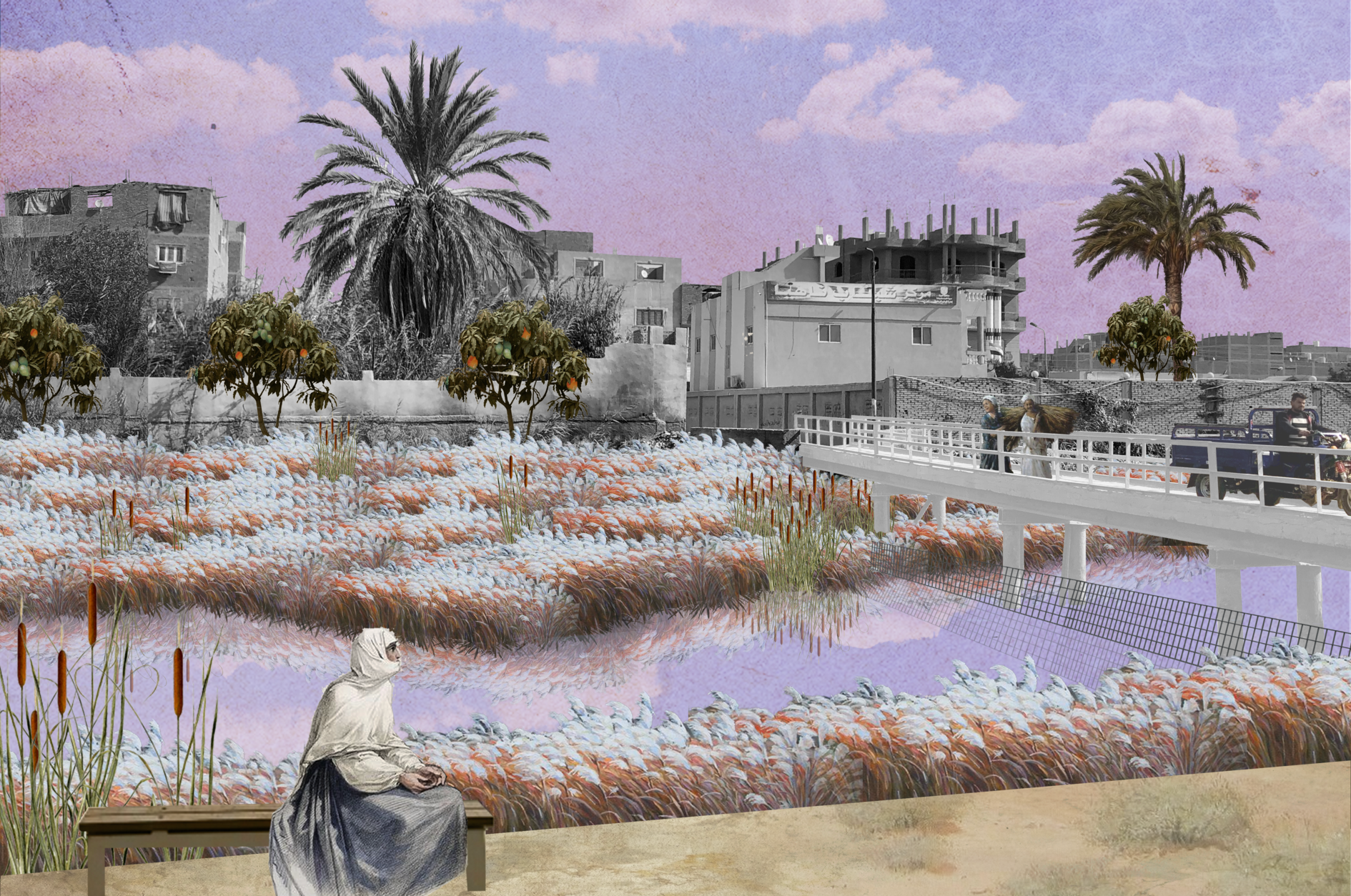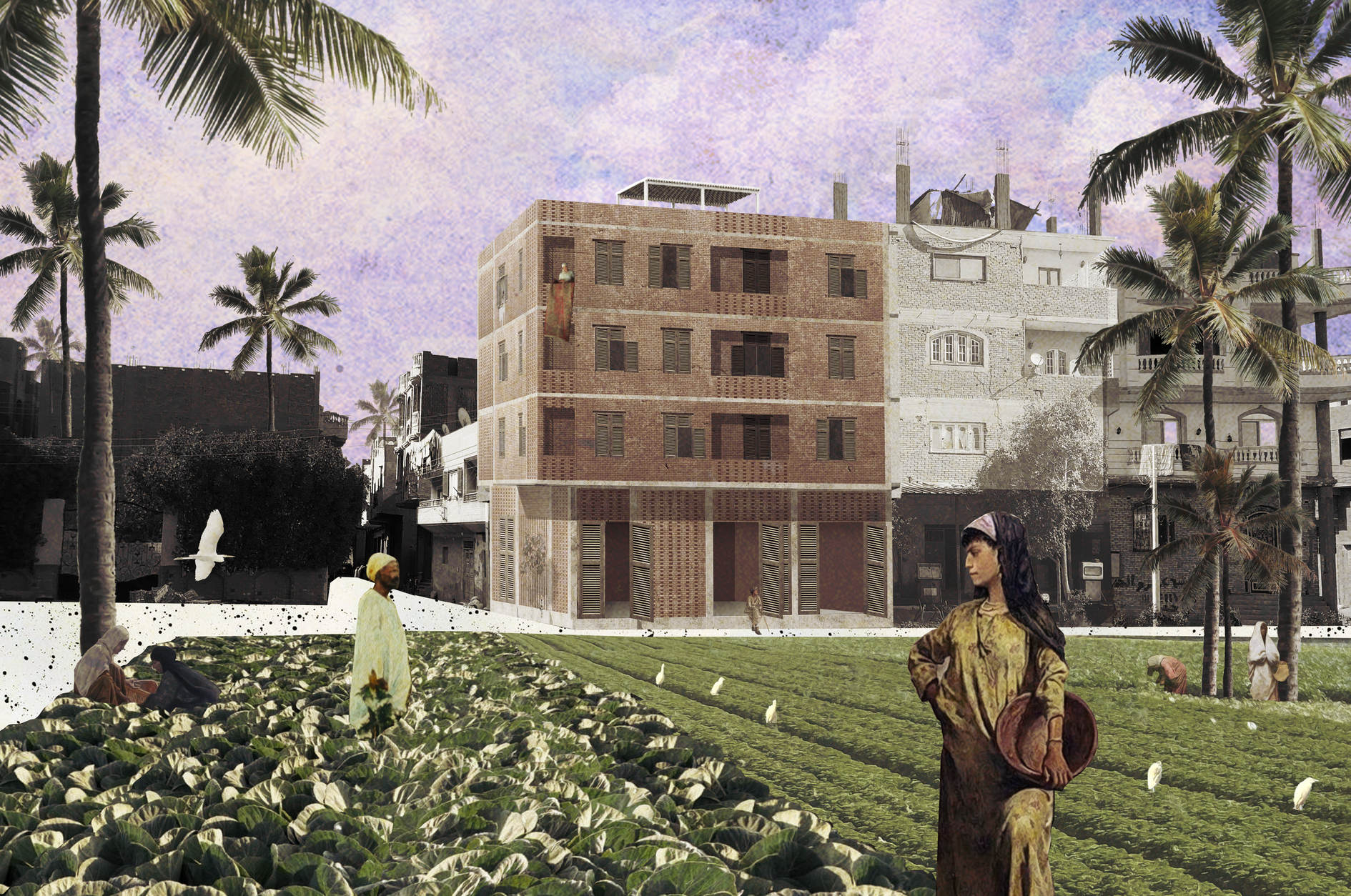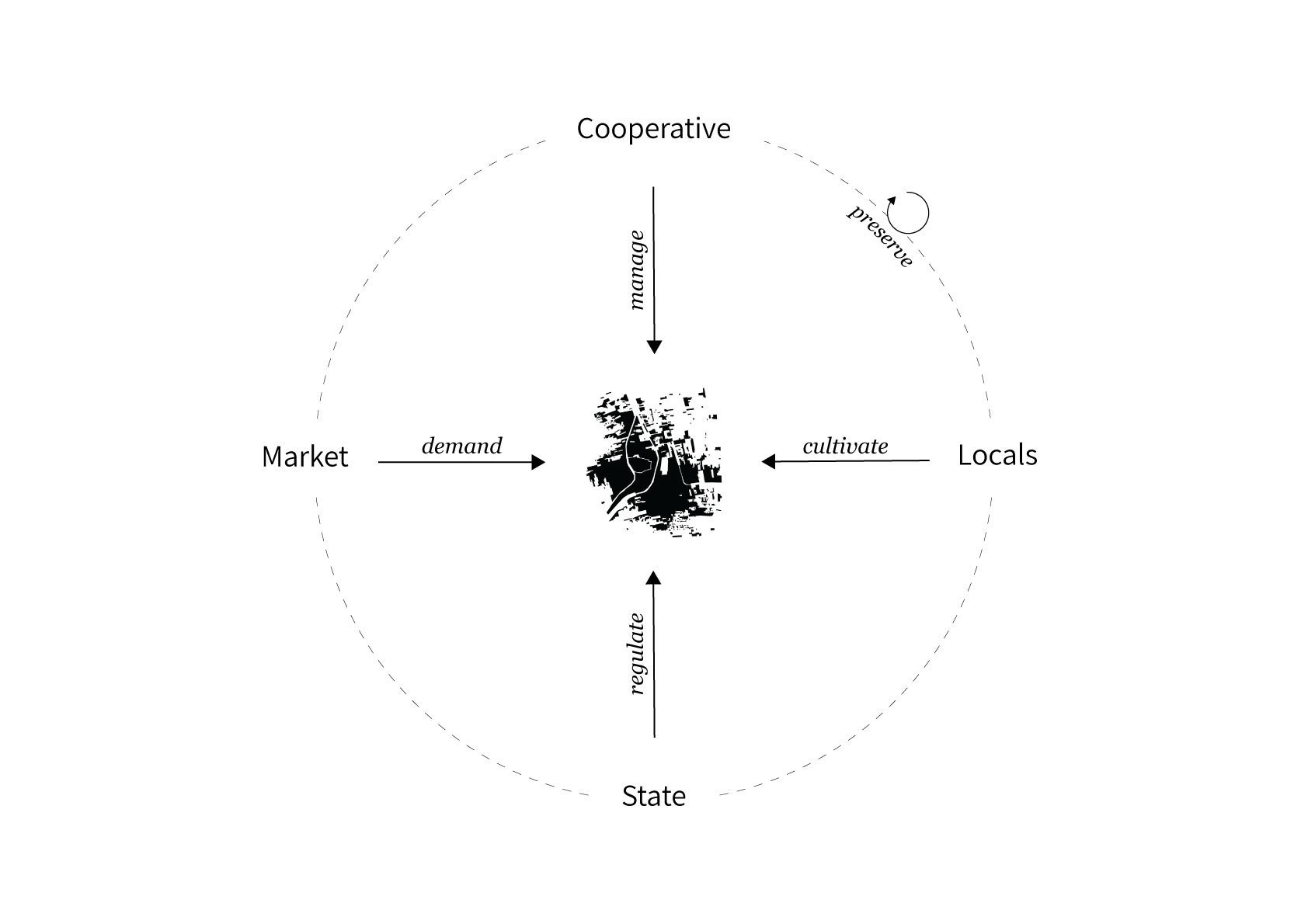Greater Cairo is a densely populated, coalesced metropolitan area. It is impossible for locals to distinguish the capital from the neighbouring cities of Giza and Qalyoubeya. Today, the formal city has enormous difficulties in accommodating its approximately 21 million inhabitants who often have to take measures of their own to create the necessary living space. In 2008, 44% of Cairo’s urban mass were already informally built. Despite the enaction of the new National Housing Program of 2005, which, among other things introduced mandatory building permits in rural areas, the villages on the periphery of Cairo are still growing rapidly. Our study site Nahya in North Giza is one of many self-organised agglomerations that, without proper planning, face critical social and environmental challenges. In 2017, Nahya reached a population of 80,208 and to date has no formal sewage system. So while the arable land is shrinking and with it the agricultural knowledge of the inhabitants fades away, questions of food security and water scarcity have become imperative. Like many other delta villages, Nahya is undergoing a transformation process, from a society living exclusively from agriculture to a diversified urban economy with retail, industry and services. As part of our bachelor’s project, we intend to intervene in the ongoing process and have designed an urban planning and architectural proposal that aims to strengthen agricultural economy through a cooperative approach that in turn strengthens the village.
Produce, Preserve, Cooperate.
October 2019 - May 2020Nahya, Egypt

Palms Intervention

Reeds Intervention

Fields Intervention with Pilot Building

Concept Diagramme

Synthesis Diagramme